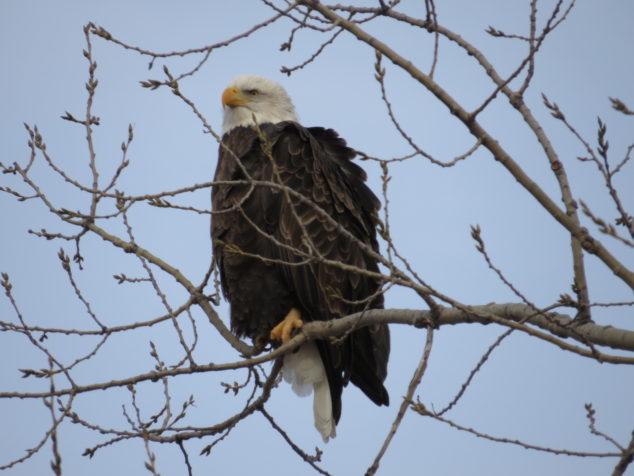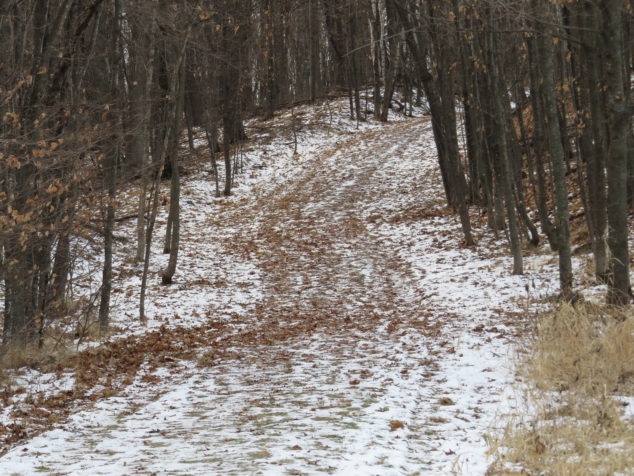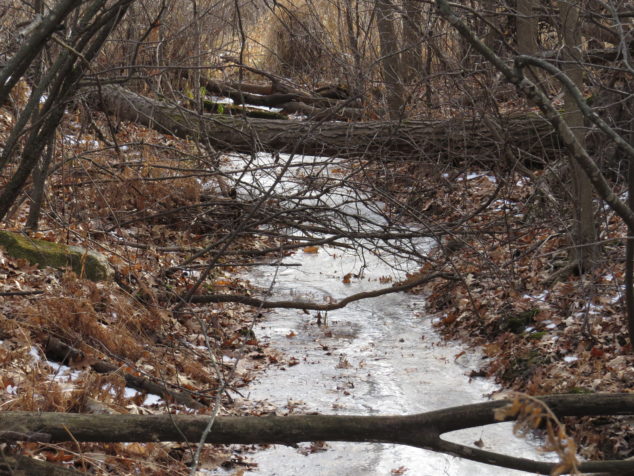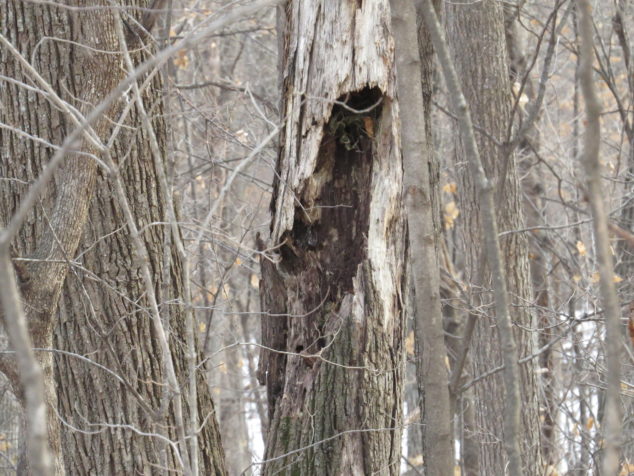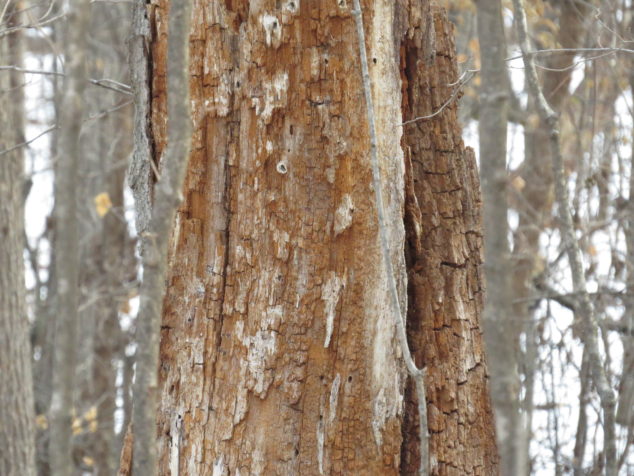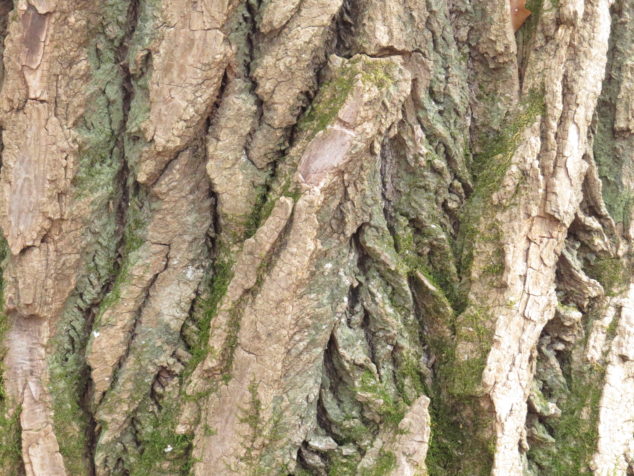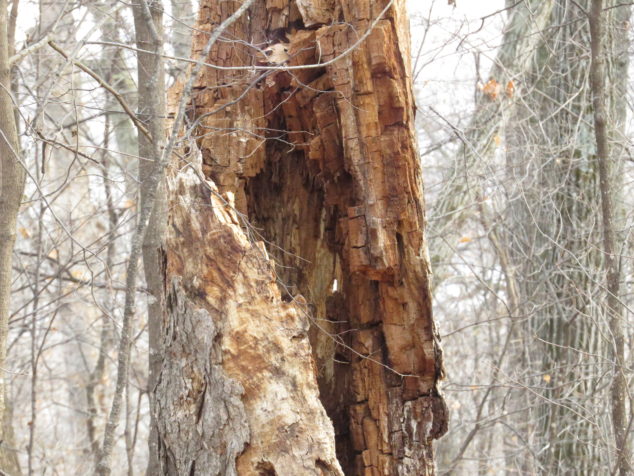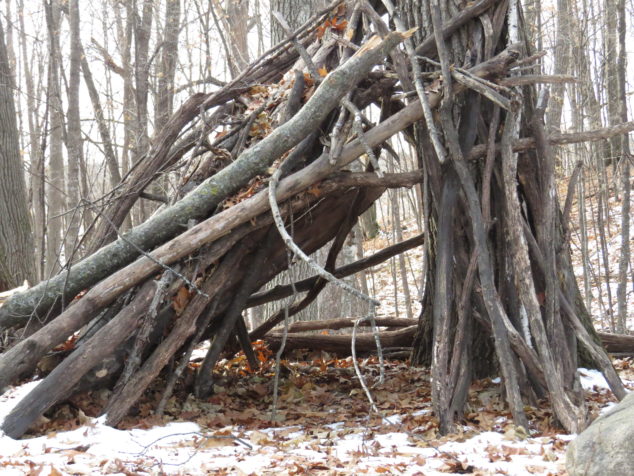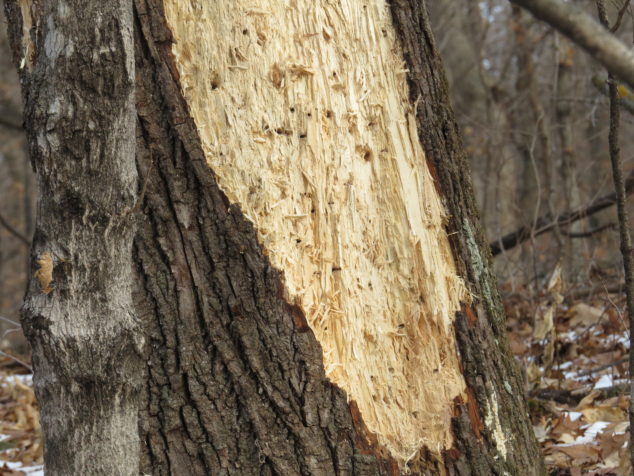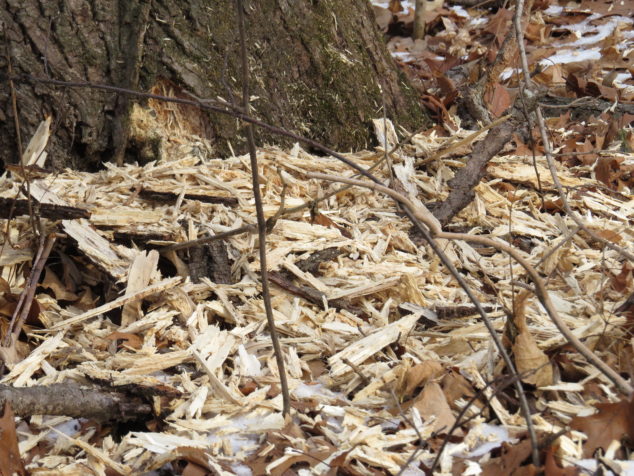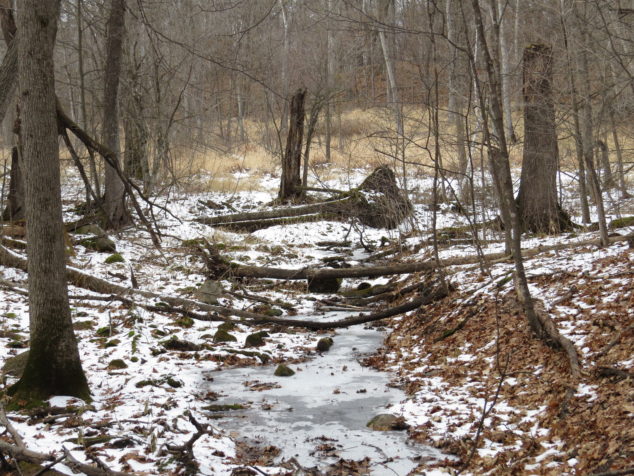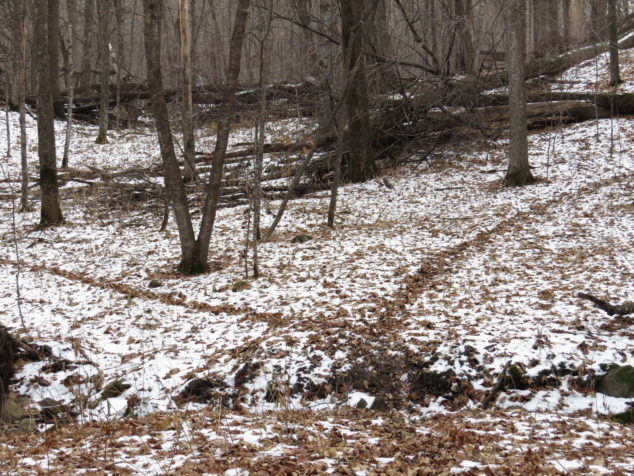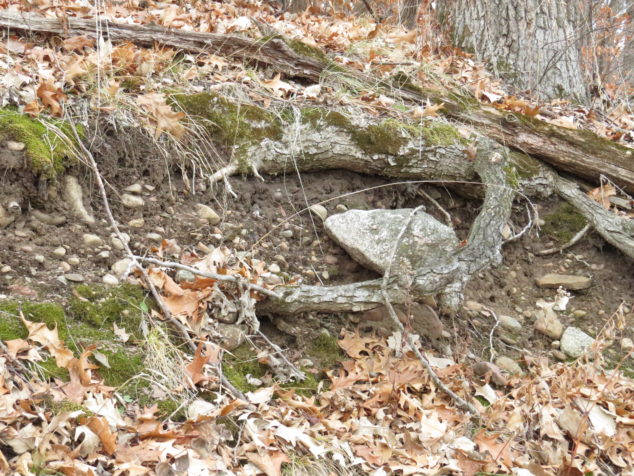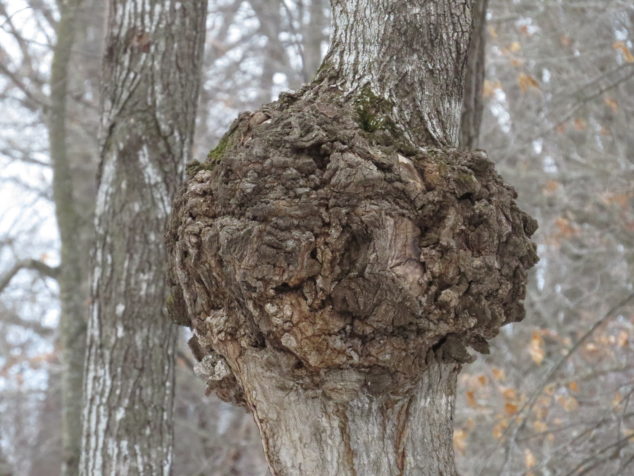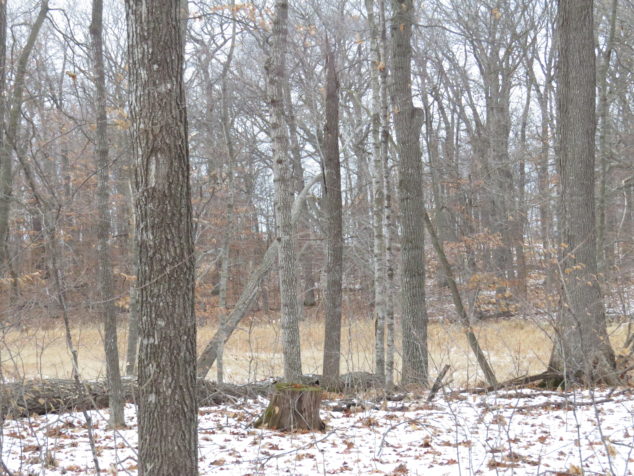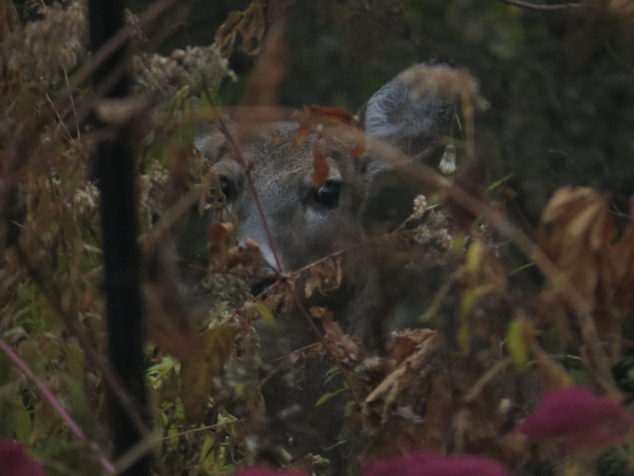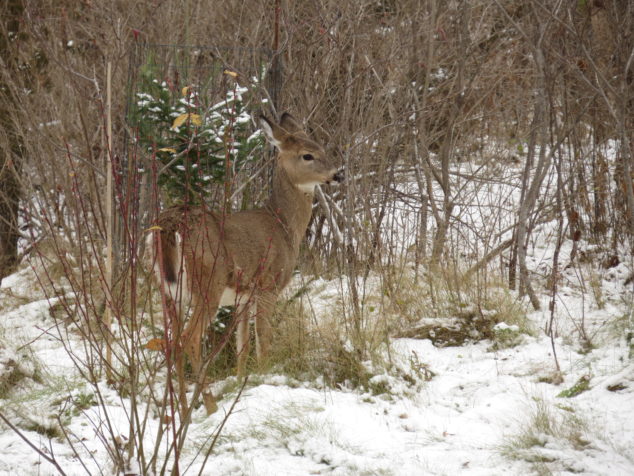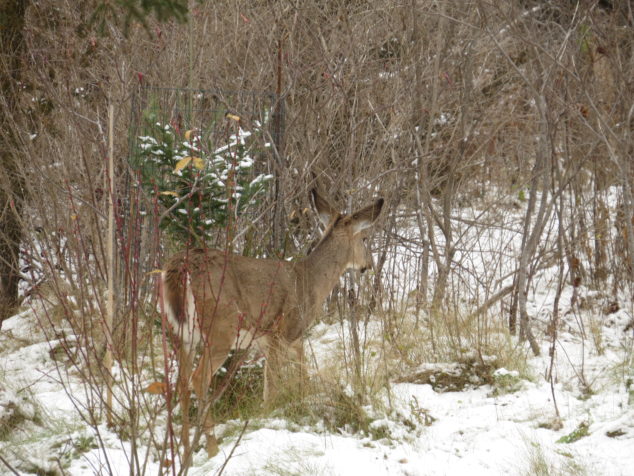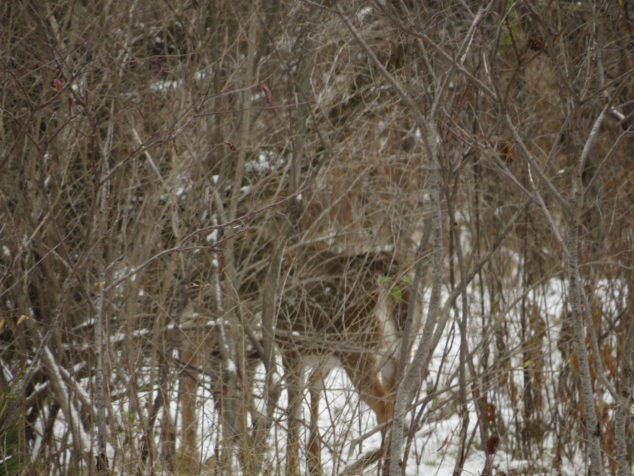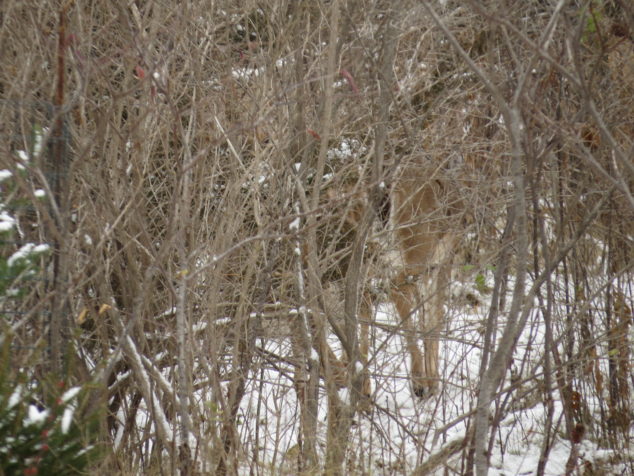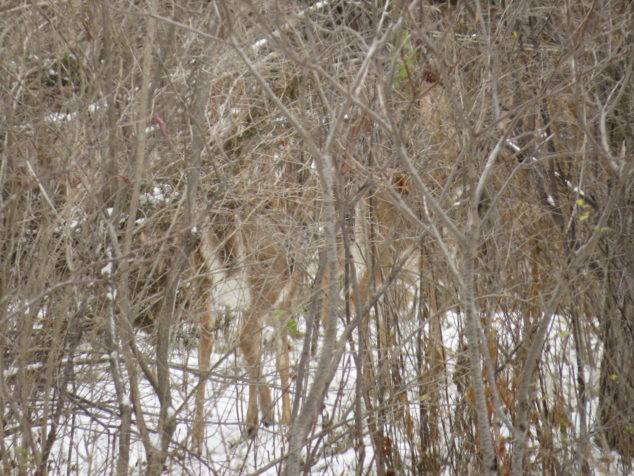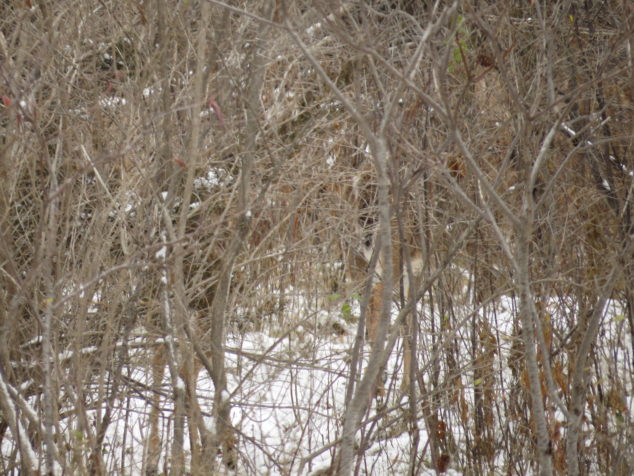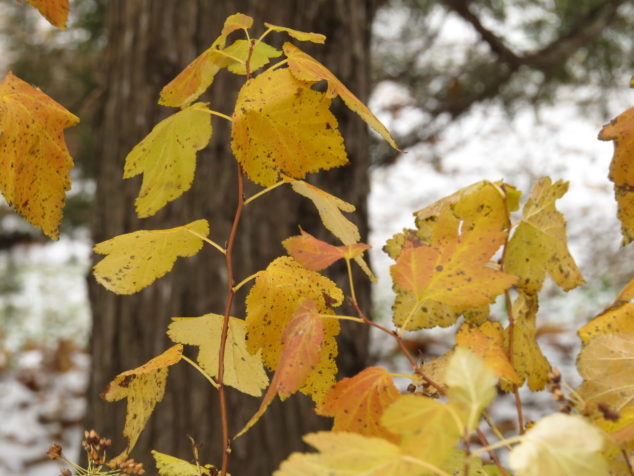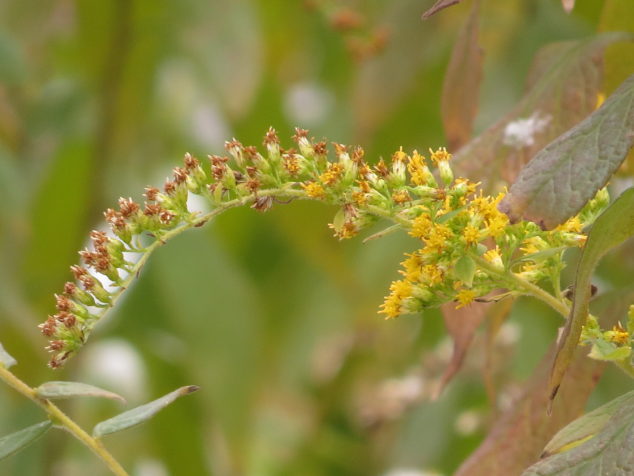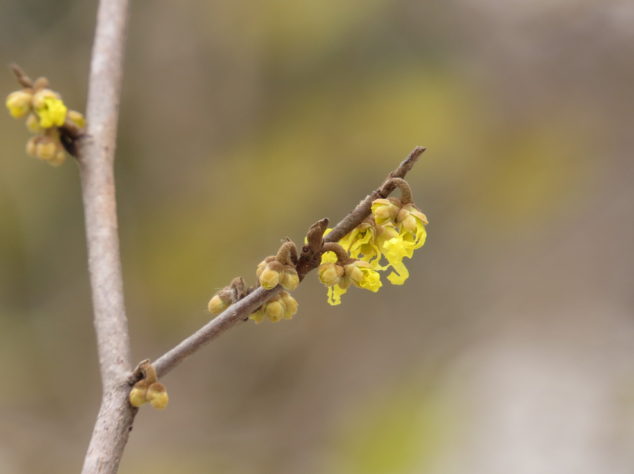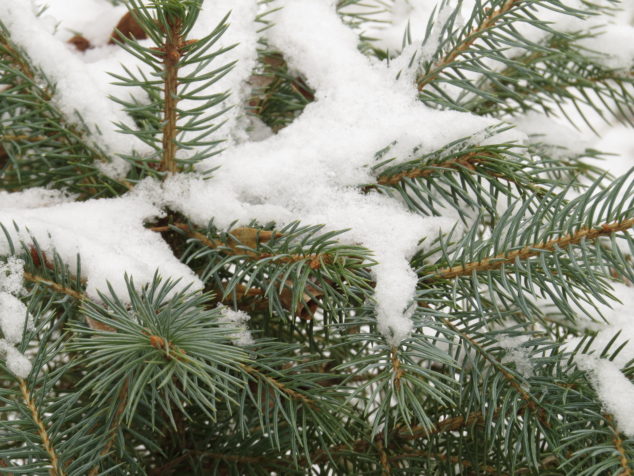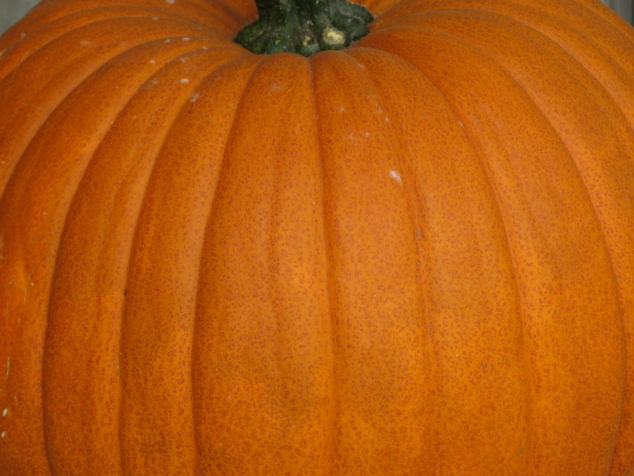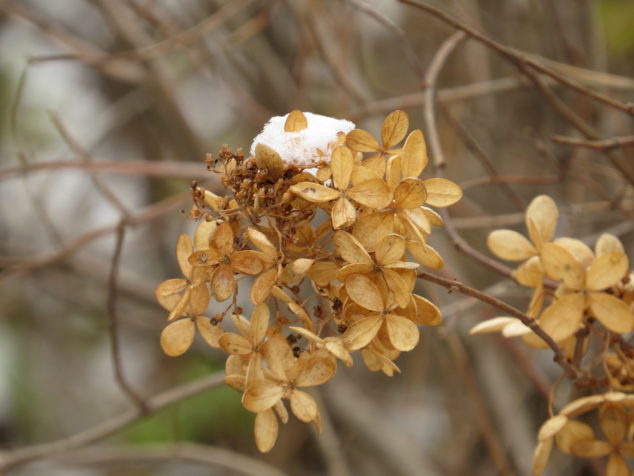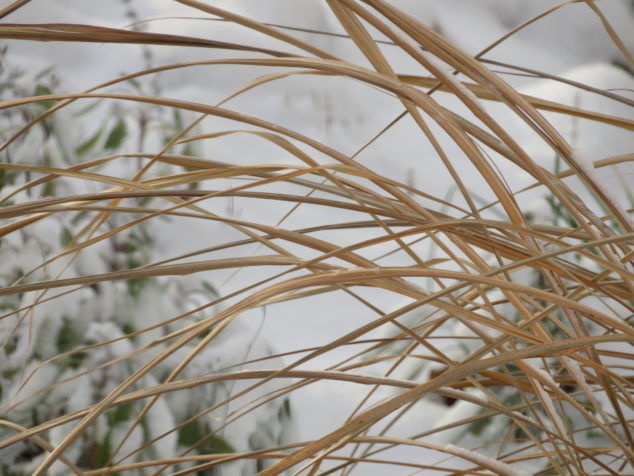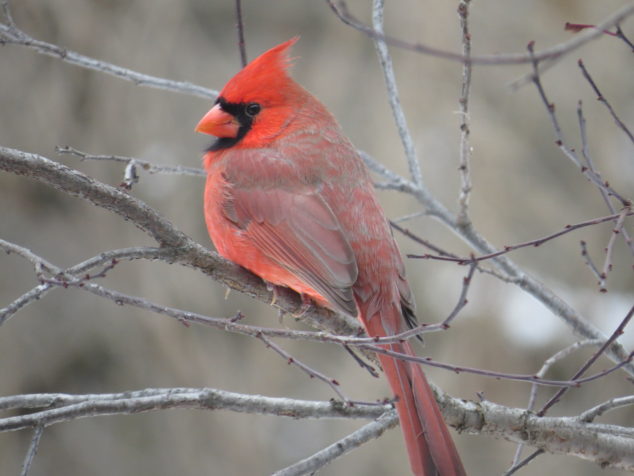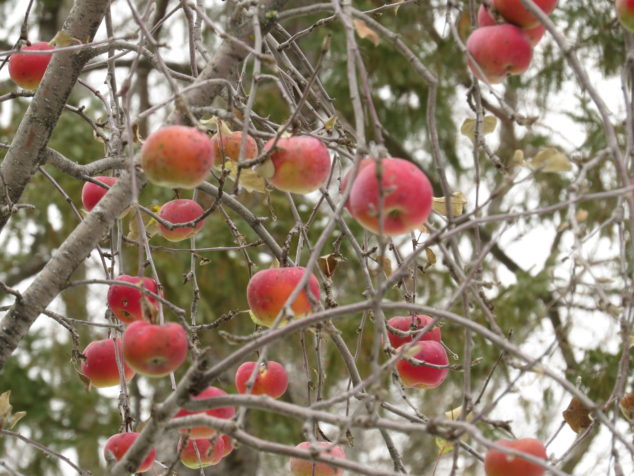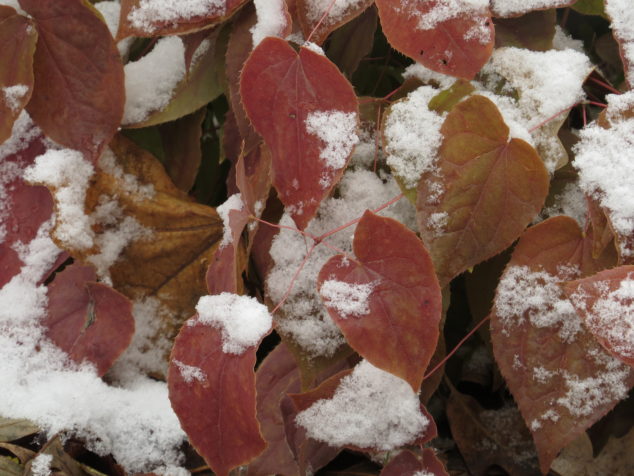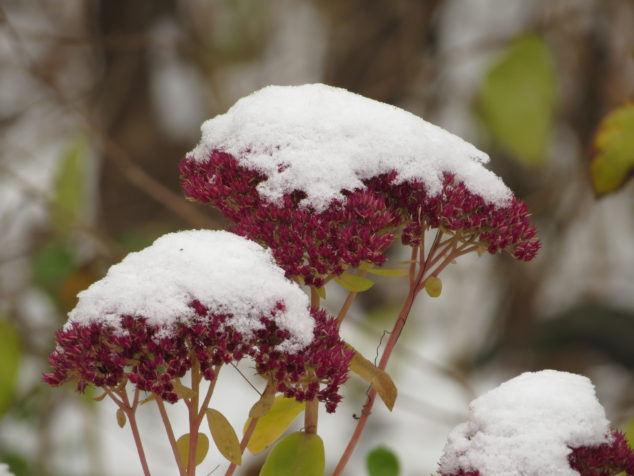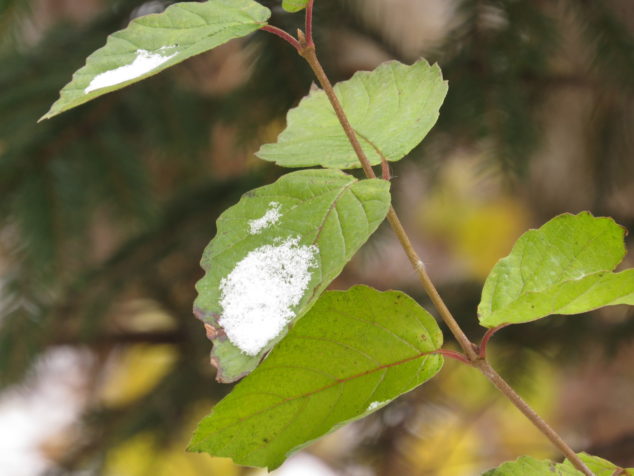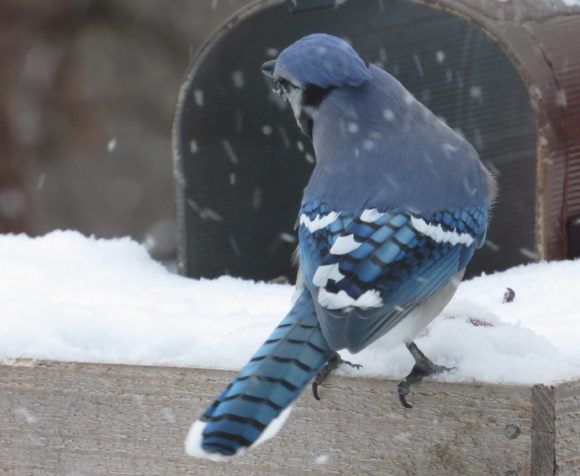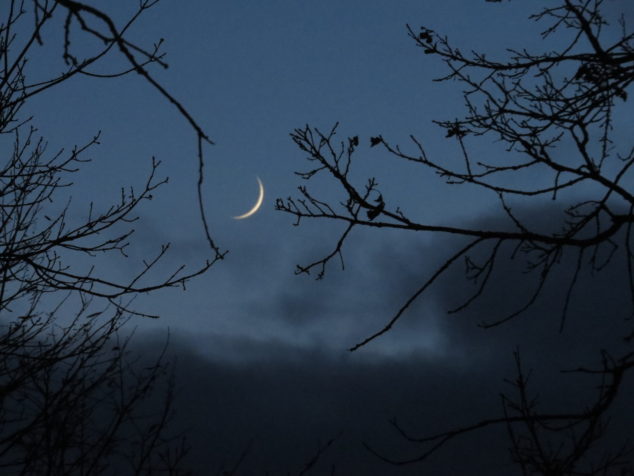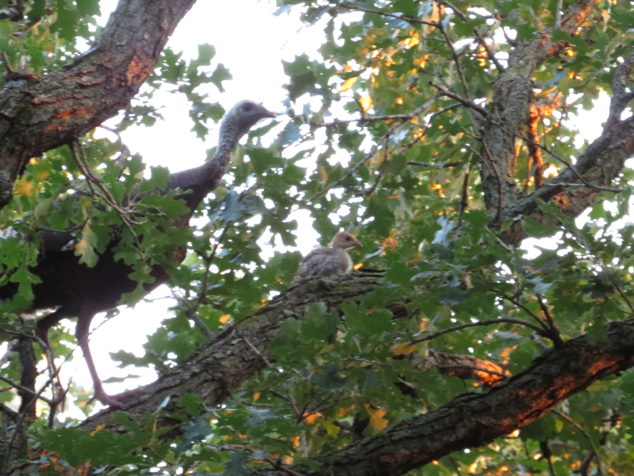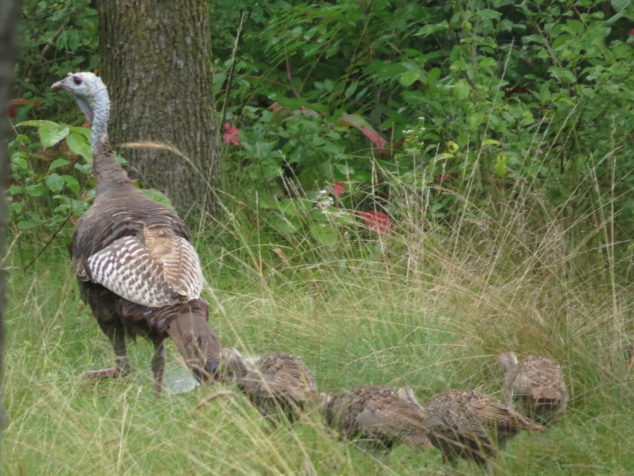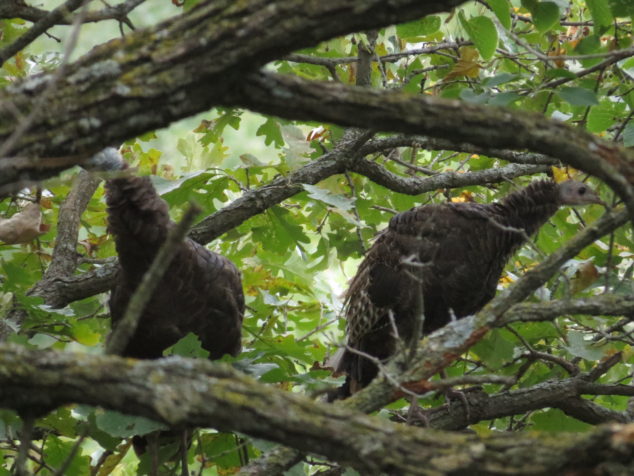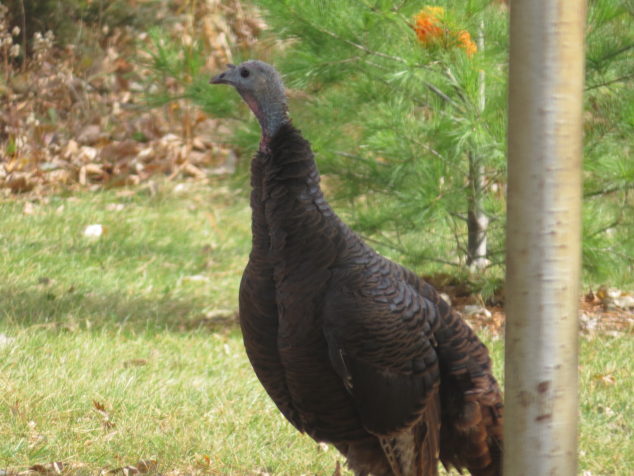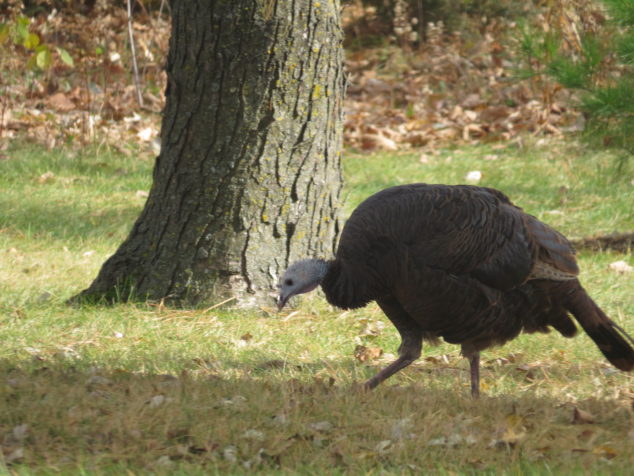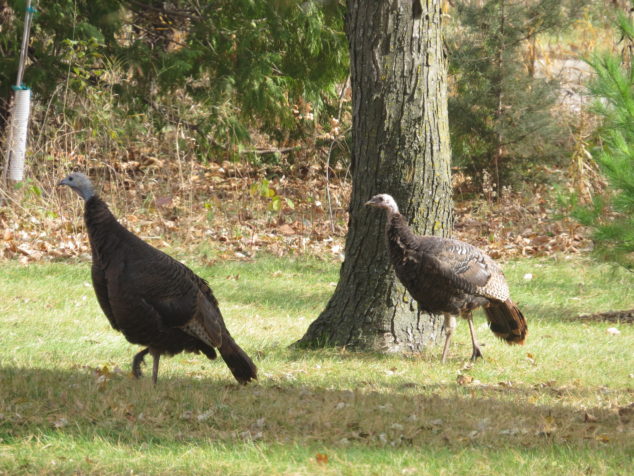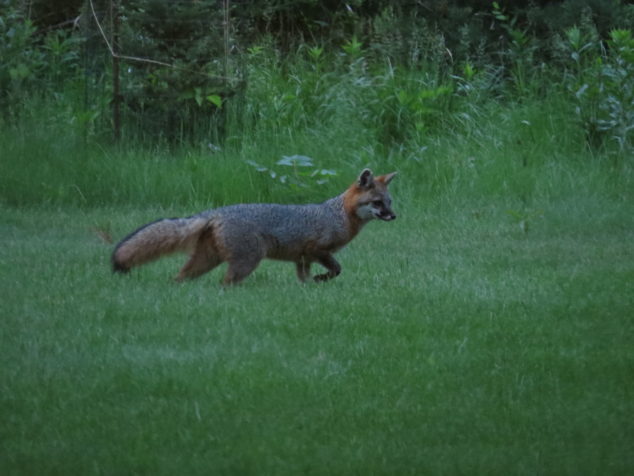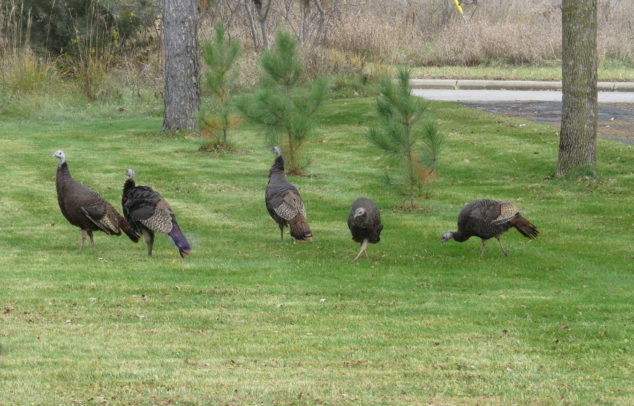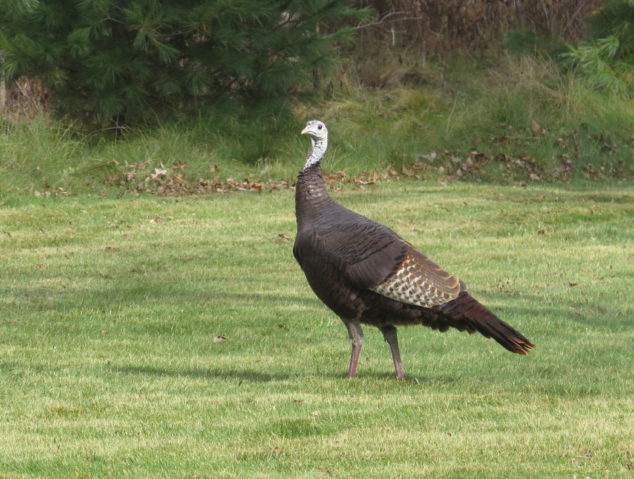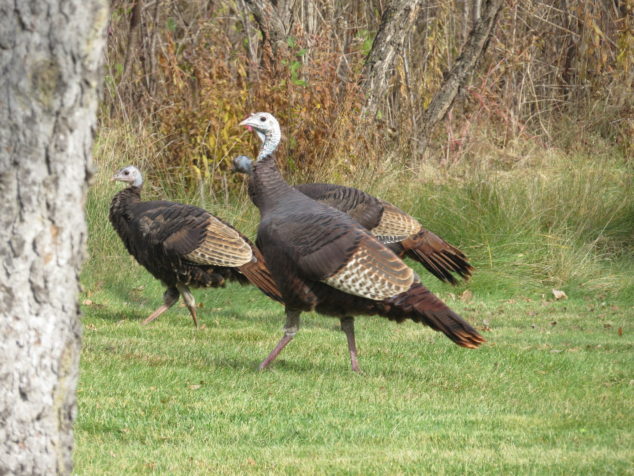It was unusual to see an eagle just sitting in a tree along the highway. They do that beside the River in search of fish or close to their nests. It’s usually hawks that sit in trees or on posts surveying the ditches for signs of mouse movement in patient anticipation of a tasty tidbit. Once I got his photo and we drove on, I commented to Chris how unusual it was to see an eagle in a tree beside the road. While I had been staring at the eagle, Chris had been surveying the road behind us where we were pulled over and the road before us where he noticed a dead deer in the ditch. I was totally focused on the eagle and didn’t see the dead deer—and that was why he was sitting there in the tree.
We continued to our destination—Wildwood County Park—for a chill-busting hike in the Maple and Basswood forest where some of the towering Maples are 300 years old. It is a well-managed forest; tractor tracks followed the ski trail where freshly cut logs of downed trees were piled in the scant snow, and I didn’t see any Buckthorn invading the woods.
We crossed a creek flowing under a layer of ice with bridges of fallen logs—some bear-sized, some mouse-sized—connecting one side with the other.
With no leaves on the trees and no ‘greenery,’ the trees themselves became the focal points—the trunks and branches, the colors and textures.
We found a ‘fort’ made of branches, a shelter from the winds on the ridge. Would you stay here?
One of the dead Basswood trees was obliterated by a Pileated Woodpecker. Huge white patches of drilled wood stuck out in the gray day, and a hefty pile of shavings gathered at the foot of the tree.
At another creek, two deer paths diverged from the creek into the woods. Which way would you go?
In any mature forest there are many downed trees—all a part of Nature’s recycling program. Oftentimes we forget about the extensive root systems that anchor trees and keep them nourished. An eroded bank exposed some of the roots of this oak tree, reminding me of the unseen network of support.
A large burl interrupted the smooth flow of a tree trunk. The dark, bumpy, tumor-like growth is caused by an injury, a genetic mutation, insects, or fungal and bacterial infections. The cells divide more rapidly than normal (like many cancers) or there is excessive cell enlargement (hypertrophy). Burls are coveted by woodworkers as the wood has unique and beautiful grain patterns due to knots from dormant buds and the swirls of the unusual growth.
The woods of Wildwood were bare and stripped down on this cool, gray day with interesting things to see and life lessons to learn if we are so inclined.
I’m sure the eagle spotted the dead deer when he was soaring high above the ground surveying his territory—it’s what they are meant to do. The deer would provide food for many days—if the eagle could safely access it. They are not swift on the wing to get out of the way of cars, so from his perch in the tree, he could watch for an opportunity to feed on the carcass. Seeing the eagle and not the deer reminded me that we ‘see’ what we look for, what we are focused on and many times, we don’t see what else is ‘in the picture.’ That’s when it helps to have other eyes and other points of view—Chris saw the deer—the reason why the eagle was there. He kept watch for danger in passing cars as I looked only at the eagle. The Wildwood showed how bridges connect one side with another—natural things like logs, laughter, love, and lively conversation. What creates our shelters from the wrathful winds and storms of life? We must build them log by log, bit by bit. Is it prayer or yoga or daily walks? What makes each of us resilient? What do we do with the old, dead parts that no longer work? We mine them for the morsels that will continue to sustain us, then discard the rest. We choose our paths, and all the while, we remember our network of support, that we don’t make our way in this world by ourselves, by only what is seen. Who holds us up? Who sends nourishment to us? Who helps build the shelters and bridges? The burled tree reminds us that ugly things can be transformed into beautiful creations. It usually takes time, hard work, dedication, and the ability to see beyond the ugliness. When we survey our territory and see and learn the lessons the eagle and the woods have to teach us, we can see the opportunities, not be blindsided by the dangers, stay safe in our shelters with those who sustain us, and create Beauty for all to see.
